Horse first aid is the initial help given following injury or illness. It may need to be followed up by ‘second aid,’ which could involve more sophisticated treatment or investigations, depending on the severity of the initial problem. The objectives of horse first aid are to:
- To preserve life.
- To prevent suffering.
- To stabilize the patient’s condition.
- To relieve acute conditions.
- To promote recovery.
The Rules of Horse First Aid
The basic rules of equine first aids are:
1. Equine First Aid: Do Not Panic
A calm, sensible approach will reassure the horse and benefit all concerns. When you discover something is wrong, take a deep breath and make an action plan. Equine veterinary nurses are taught to make a rapid assessment and act on it. The more urgent the situation, the more immediate action needs to be taken. The following sequence of steps is described here:
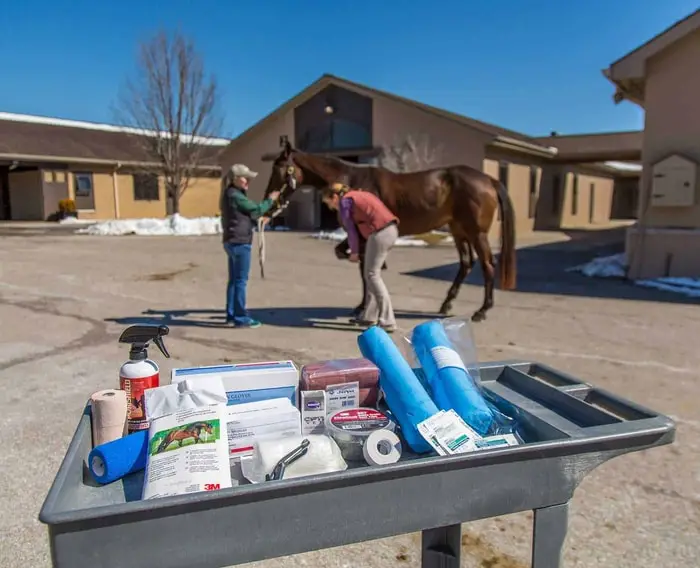
A. Scan: Rapidly evaluate the people, the horse, and the environment.
B. Identity: the relevant problems and predict the most likely results.
C. Prioritize: Decide where the immediate needs lie.
D. Plan: What action would be taken.
E. Execute: The plan.
F. Reassess: Repeat and continue until the horse and people involved are stabilized.
2. Ensure the Safety of All
A distressed horse can behave unpredictably, so always ensure the safety of all present. If practical, seek help before doing anything drastic yourself and never put yourself at risk, as the situation will only be made more dangerous if you are hurt and your horse.
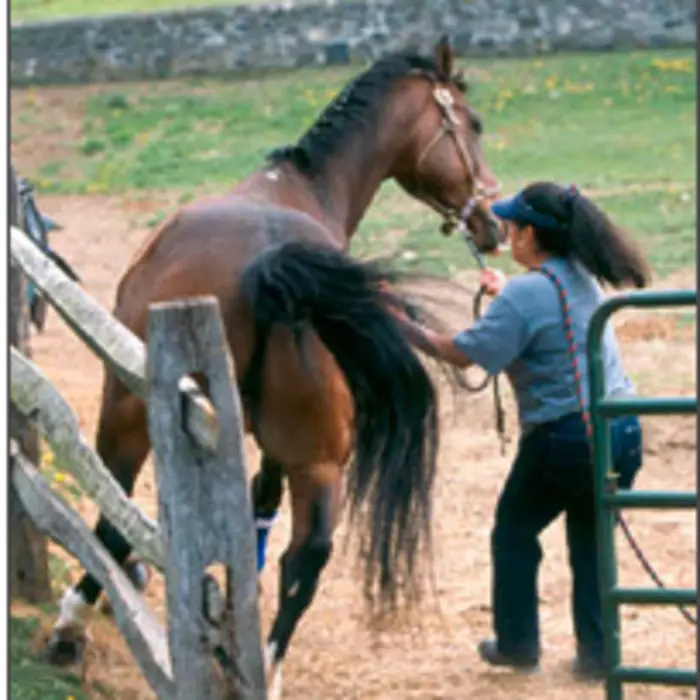
If you are first on the scene, secure the horse, ideally by putting a headcollar (which is a good reason for always carrying on in your car) and try to reassure them; then stop, think calmly and logically, and summon help.
3. Horse First Ais: Contact Your Vet
With modern methods of communication such as mobile phones, pagers, and the like, it should be relatively easy to contact your vet to ask if your problem is an emergency; it is vital to observe the following procedure:
- Always explain when you ring that you think you have a possible emergency.
- Have ready all the necessary information, the horse’s name and the owner’s detail, the location, and your phone number so you can be rung back.
- Ensure you keep the line free, so the vet can ring you straight back. Do not ring anyone else until you have talked to the vet.
- The best person to talk to the vet is the one who knows most about the horse’s illness or injury.
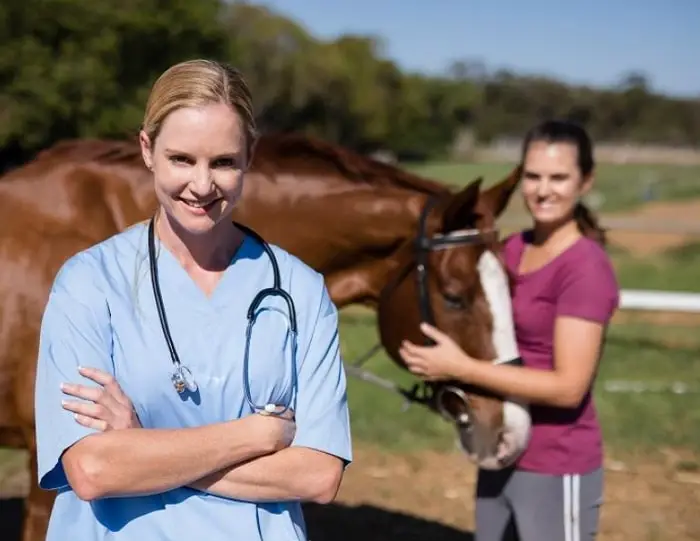
- If a horse is seriously affected or injured, it may be necessary to transport him to a clinic, where better facilities are available for treatment.
- It is always better for a horse to travel sooner rather than later; while he is still fit to do so, no one will complain if he has recovered by the time he arrives.
- If the horse takes a step for the worse and has already been taken to an equine hospital, he is undoubtedly in the right place.
- If your horse is kept a long way from a specialist equine hospital facility, or if he is unfit to travel, then you and your vet may have to manage more significant problems at home.
4. Equine First Aid: When To Call The Vet
With all potential emergencies, experience helps in a true crisis. If in doubt, call your veterinarian for help or advice. If your horse suffers a significant injury, develops severe colic, or is otherwise clearly in acute pain, you need to contact your vet straight away. Some problems, mainly minor injuries, some owners initially dismiss as unimportant but would benefit from urgent veterinary attention.
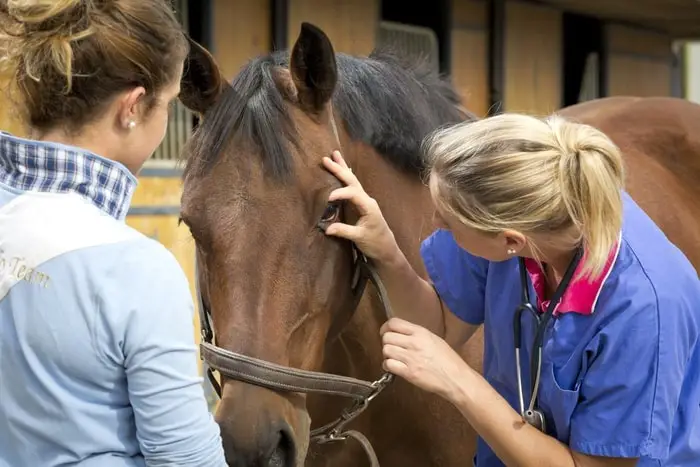
In between are a host of conditions that can cause varying degrees of concern and varying degrees of uncertainty as to whether a vet’s visit is justified. It is impossible to describe every situation or set rules for each one. However, conditions with cause for concern include colic, lameness, wounds, choke, and foaling.
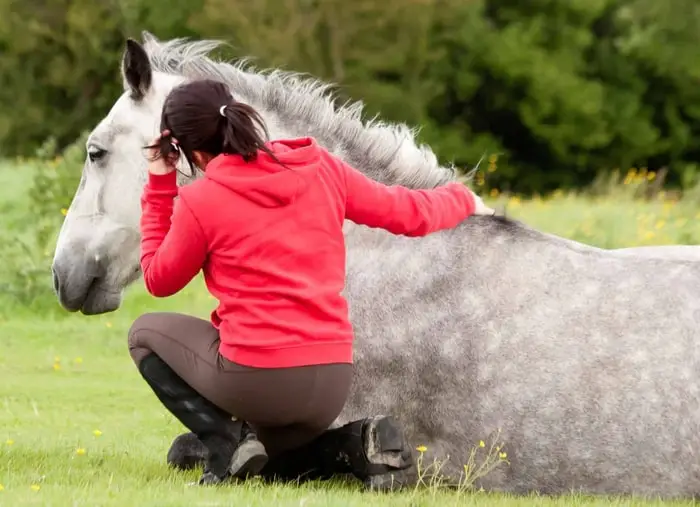
A. Colic.
The day in colic may be dangerous. No matter how experienced you are, if even mild colic persists for more than half an hour, or if colic subsides but then recurs, you should at least speak to your vet.
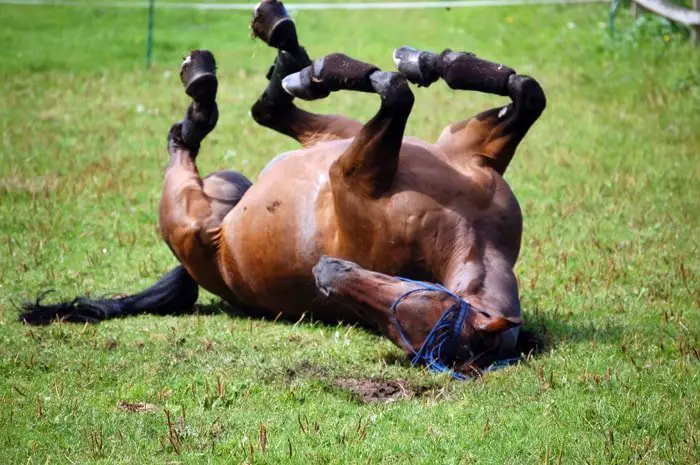
B. Lameness.
Lameness in horses may require urgent treatment. In general, if a horse is standing on only three legs and cannot walk, you should contact your vet straight away. On the other hand, a horse can walk on a lame leg but would still be best seen by a vet (or the farrier if the problem is shoeing related) the same day.
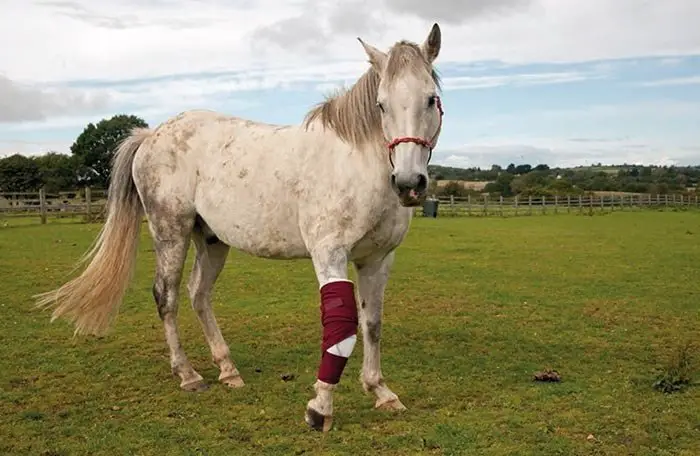
C. Wound in Horse
The wound in the horse’s position is crucial. The wounds often confuse. Any fresh, clean-cut that has gone right through the skin so that the sides gape apart is a possible candidate for stitching. Usually, it is only worthwhile stitching a wound if it is fresh (less than 6 to 8 hours old). Many wounds will heal very well without being stitched at all.
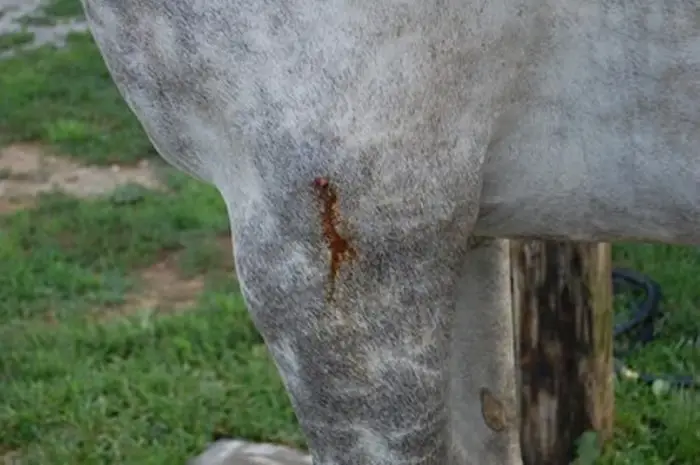
However, any wound near a joint or other vital structure, for example, the tendon seath at the back of the pastern, must be taken seriously, as such damage can permanently cripple a horse. You should contact your vet at once if there appears to be only a tiny puncture wound, but it is causing a more severe lameness than expected.
D. Choke or Esophageal Obstruction on Horses
Generally, choke has the appearance of a dire emergency but is usually less severe than it seems. The majority of cases will clear themselves before your vet arrives. Choke occurs when food gets stuck in a horse’s throat. The important thing is to prevent the horse from eating anything further; put him in a box with no hay and non-edible beddings, then contact for advice. Very often, by the time you have finished the phone call, the obvious will have cleared. However, although it is not always the emergency that it first appears, if the obstruction does not shift within an hour, you will need help from your vet.
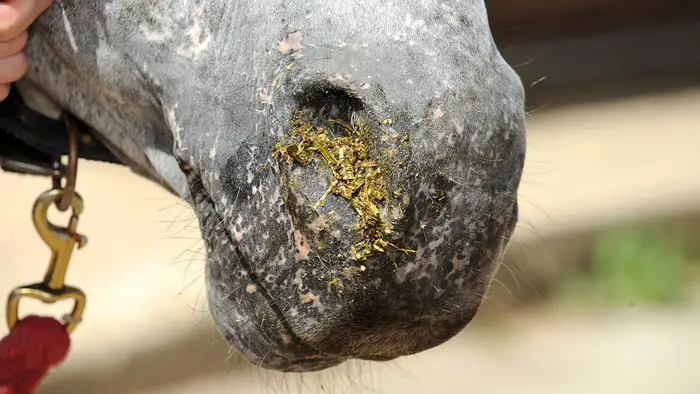
E. Foaling Difficulties in Mares
Foaling difficulty is the number one red-alert emergency. Once something goes wrong, every minute is vital if mare should foal down with experienced help; alternatively, you should contact your vet as soon as foaling starts.
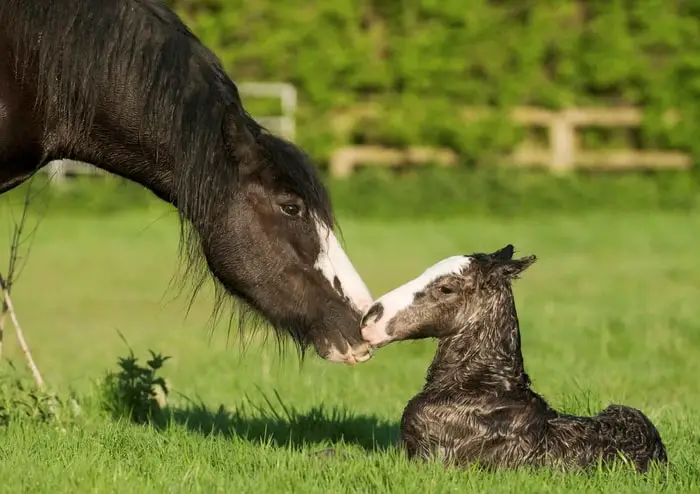
5. Horse First Aid: Reassure Your Horse
While waiting for your vet to arrive, do what you can to comfort the horse. You can do specific things to help certain conditions, which can be found in the relevant sections; however, the golden rule to remember above all others is not to harm. How much you can safely and legally do depends on the condition you are coping with.
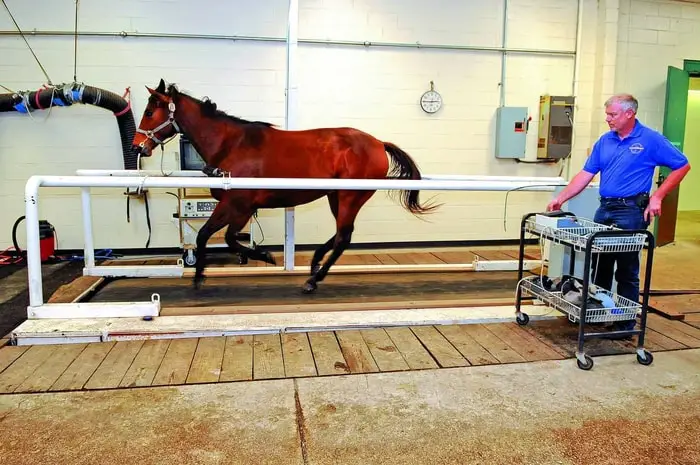
For instance, if you have a cutting wound that is bleeding badly, you need to apply a pressure pad to staunch the blood flow rather than wait for the vet to arrive and do it for you. Use your common sense; for instance, most lame horses are best brought in from the field; however, if a horse has a suspected broken leg, it is unreasonable to distress him further by trying to make him walk.
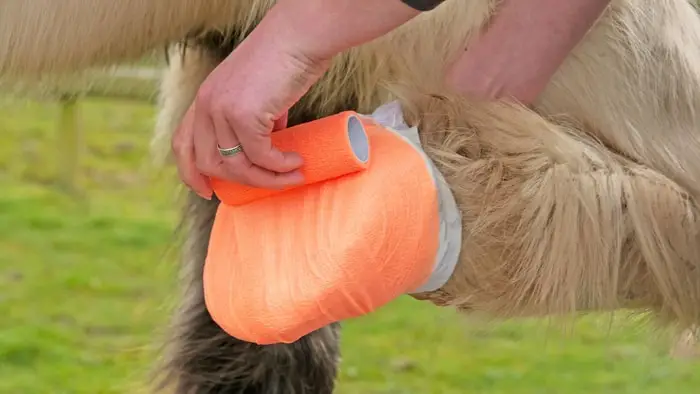
Final Advice on Horse First Aid
Horse first aid is the first response to the horse during any emergencies. The emergencies may be due to diseases or accidents. The most common emergencies are colic, lameness, accidents, wounds, eye diseases, heart attack, or foaling. As a horse owner, you must have a basic idea about equine first aids. You must have basic knowledge and experience on this matter. The first aid response saves many horse’s life during an accident.